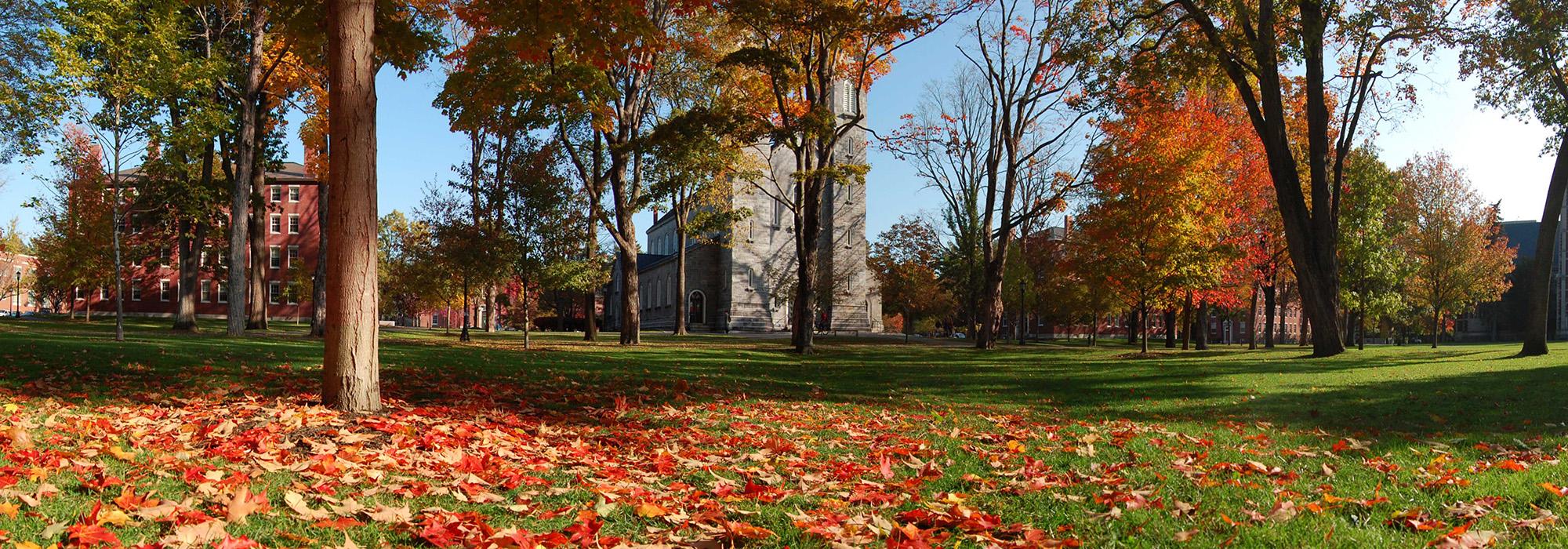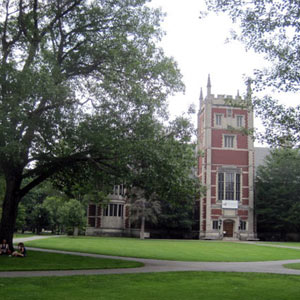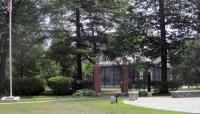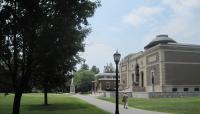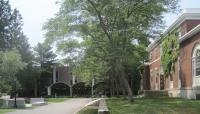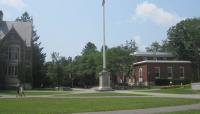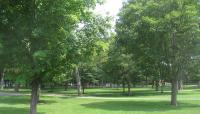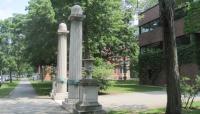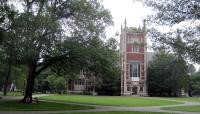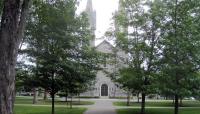Landscape Information
In 1794 a group of clergymen, landowners, and lawyers petitioned Massachusetts for a Maine college charter, and selected Brunswick as the site for its rural character and “isolation from urban temptations.” After James Bowdoin III endowed the college with his library, art, and scientific collections, the college adopted his family name for the school. In 1802 Massachusetts Hall opened with eight students; within six years, the college had four buildings in a quadrangle layout which formed the core of the campus as it exists today. By 1855 the quadrangle was more established, with brick residence halls and a granite chapel overlooking a common green surrounded by a rail fence. Additional construction established today’s campus character: a variety of architectural styles – Federal, Classical Revival, and Gothic Revival – in brick and stone around parkland with shade trees intersected by pedestrian paths.
Seven memorial gateways were built between 1902 and 1940, one designed by McKim, Mead and White, who also designed numerous campus buildings and prepared a master plan in1938 for buildings, paths, plantings, and future development sites. The campus includes an unusual natural feature with walking trails, the 33-acre Bowdoin Pines, one of Maine’s few remaining old-growth forests. Several buildings on the campus are listed in the National Register of Historic Places.



